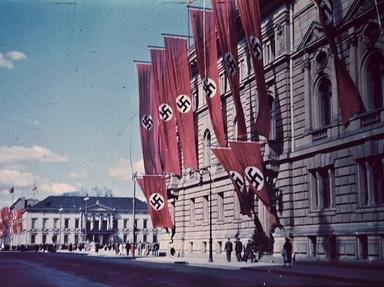Quiz Answer Key and Fun Facts
1. Germany was notorious for exceptionally rabid antisemitism, almost without interruption, from the time of the Crusades until 1945.
2. Which of these countries had a large and electorally successful antisemitic political party in the period c. 1885-1918?
3. Many of German nationalist poets and thinkers claimed that Jews could not be "true Germans". Which of these authors did NOT express such views?
4. In the period 1815-71 there were no major anti-Jewish disturbances in the German states.
5. By which of these dates had all the German states granted full citizenship to their permanent Jewish inhabitants?
6. Why did Wilhelm Marr (1819-1904) invent the term "antisemitism" and popularize the words "antisemite" and "antisemitic" from 1879 onwards?
7. In the period c. 1880-1900 Jews were sometimes accused of "ritual murder" - a grotesque revival of one of the worst features of the Middle Ages. In four instances in Central Europe Jews were brought to trial as a result of such accusations. In which of these cases was the accused convicted of murder?
8. Assessing the level of antisemitism in Germany under William II (reigned 1888-1918) is not simple, but it is generally thought that for most of this period it was not more widespread or more intense than in most other European countries. However, in 1916 German Jews had an unpleasant shock. The Prussian Minister of War, Adolf Wild von Hohenborn, issued an order. What was it?
9. Which of these countries was notorious in the period c. 1881-1914 for frequent pogroms?
10. The reformer, Martin Luther (1483-1546), wrote a violently anti-Jewish booklet in 1543. What was the main long-term significance of this?
11. Between about 1895 and Hitler's rise to power, Jews regarded Germany as a dangerous country to live in.
12. What is generally thought to account for the growth in antisemitism in Germany in period c. 1918-33?
13. On 1 April 1933 the Nazis organized a boycott of Jewish businesses in Berlin. The boycott was much less successful than the Nazis had hoped for.
14. In which of these Central European cities did the arrival of Nazi power trigger an explosion of antisemitic violence?
15. It has sometimes been claimed, for example by Daniel Goldhagen in "Hitler's Willing Executioners" (Alfred Knopf, Inc., New York, 1996), that German antisemitism in the period c. 1810-1945 was *fundamentally different in kind* from antisemitism in other countries, and that it aimed at "elimination". What is (or are) the key problem(s) with such a view?
Source: Author
bloomsby
This quiz was reviewed by FunTrivia editor
trammgr before going online.
Any errors found in FunTrivia content are routinely corrected through our feedback system.

